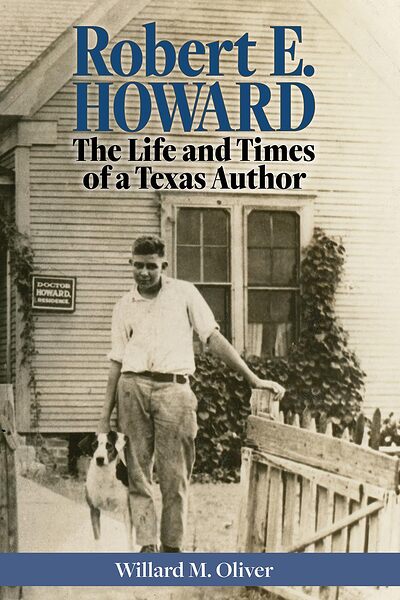Looking for a good read? Here is a recommendation. I have an unusual approach to reviewing books. I review books I feel merit a review. Each review is an opportunity to recommend a book. If I do not think a book is worth reading, I find another book to review. You do not have to agree with everything every author has written (I do not), but the fiction I review is entertaining (and often thought-provoking) and the non-fiction contain ideas worth reading.
Book Review
The Anachronistic Author
Reviewed by Mark Lardas
May 11, 2025
“Robert E. Howard: The Life and Times of a Texas Author,” by Willard M Oliver, University of North Texas Press, April 2025, 592 pages, $40.00 (Hardcover), $32.00 (E-book)
Robert E. Howard invented sword and sorcery, epic heroic fiction with magic mixed in. A major pulp author of the 1920s and 1930s, he created memorable fictional heroes still popular today: Conan the Cimmerian, King Kull of Atlantis, and Soloman Kane among them.
“Robert E. Howard: The Life and Times of a Texas Author,” by Willard M Oliver is a new biography of the man. It may be the best one written.
Oliver takes a deep, detailed, and intimate look at Howard’s life and career. This includes examination of his ancestry. parents, upbringing, and childhood. Oliver looks at how all these factors affected Howard and shaped his writing.
Oliver shows how Howard became a writer seeking personal freedom. Writing for the pulp magazines of the time offered an opportunity to work independently, at the hours he wished to work, and without answering to a boss. It shows how Howard, largely self-taught, entered the pulp fiction world, and the process behind and influences on his writing.
The book is also a fascinating look at life in small-town Texas in the first third of the Twentieth Century. Texas was then in transition from being a frontier state dependent on ranching and agriculture to the urban, industrialized state it is today. Howard was part of that transition, looking longingly at the dead days of cowboys and Indian wars, while embracing technological change, such as the automobile.
Oliver makes clear Howard did not commit suicide because his mother died, as is widely believed. Rather, his mother’s death liberated Howard from the responsibility of caring for her, a burden he shared with his father. With that gone, he felt free to die, an impulse born of long depression and the feeling that being a pulp author had become as big a trap as being a wage slave.
He should have waited. He died just before he was making it big. Several of his books (with attendant royalties) were about to appear, and his agent was beginning to find places for Howard’s work in the higher-paying “slick” magazines. Many unpublished works appeared in print after his death.
“Robert E. Howard: The Life and Times of a Texas Author” is worth reading whether you are a fan of Howard’s writing, wish to learn of the realities of the pulp fiction industry, or to explore life in 1920s Texas. Magnificently researched and engagingly written it will capture readers.
Mark Lardas, an engineer, freelance writer, historian, and model-maker, lives in League City. His website is marklardas.com.
